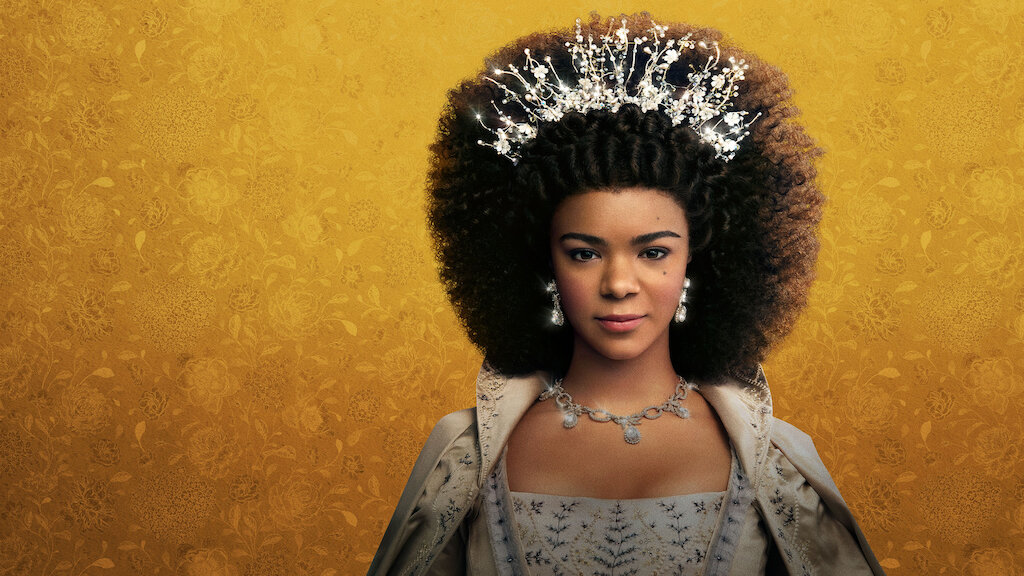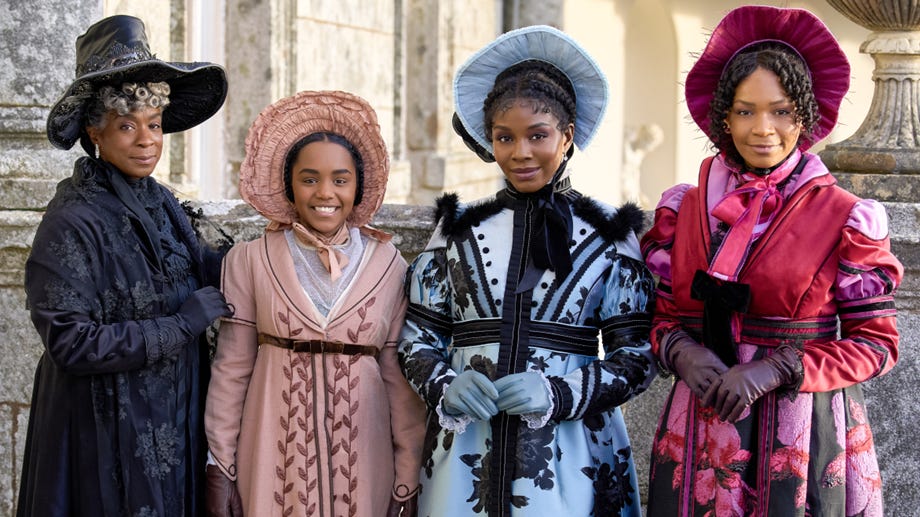The ‘Bridgerton Effect’ and the utterly mad idea that Queen Charlotte was black
The idea has now taken root that there were many black people in Regency England and that even the queen at that time was black
As some readers may perhaps have noticed, there is a concerted effort in recent years to persuade people that Britain has always been a multicultural society and that people of sub-Saharan African origin have, throughout history, played an important part in the life of the nation. To this end, many untruthful stories have been devised and sedulously propagated to the credulous and willing. Here is one such; that Queen Charlotte, the wife of the British king George III was black. Charlotte of Mecklenburg-Strelitz was born in 1744. She married George III in 1761. She may be seen below, as imagined in a modern television series.
That Queen Charlotte was black, so demonstrating that the present king, Charles, is of dual heritage is, like the claim that a black man invented the electric lightbulb, one of those bizarre pieces of pseudo-history which have now found their way into mainstream thinking. The actual story about Queen Charlotte being black was dreamed up only twenty-five years ago, but has in the years last few taken off in a big way, due to the influence of television. It will be remembered that the Netflix historical drama series Bridgerton cast a black woman as Queen Charlotte. So successful was this piece of fake history that a subsequent series was made, all about the supposedly black queen. We can see the Netflix version of what she looked like, in the picture above. The theory behind this mad belief can be summed up very simply. Queen Charlotte, or Charlotte of Mecklenburg-Strelitz as she was at birth, was born to a noble family, part of whose ancestry was Portuguese. A very distant ancestor of Charlotte’s was Afonzo III, who was born in 1210 AD and ruled Portugal until 1279. Afonzo had a mistress called Madragana Ben Aloandro, who had two children by him. One of these was also an ancestor or Charlotte of Mecklenburg-Strelitz. It is possible, but by no means certain, that Madragana was from North Africa, that is to say she might have been an Arab or even a black woman from sub-Saharan Africa. It is upon this shaky and slender foundation that the British newspaper the Guardian published an article about Queen Charlotte on 12 March 2009 with the headline ‘Was this Britain's first black queen?’
Let us consider this madness. Readers are invited to imagine that five hundred years ago, in the early sixteenth century, the time of the Tudors, one of his or her very remote ancestors had an affair with somebody from Africa. Does anybody seriously imagine that this would have the effect of making a baby born to the descendent of such a person in the present day, in the twenty-first century, in any conceivable sense ‘black’? Five hundred years separate Queen Charlotte from her possibly African ancestor and so the case is precisely similar. Yet it is fast becoming almost an accepted fact that Charlotte was in some bizarre way ‘Britain’s first black queen’; hence the black actress being chosen to play the role in Bridgerton.
There is an awful tendency for anti-racists and those who believe themselves to be championing the cause of black people, to use the weapons which were invented long ago by racists. For instance, Nazi race-science is used to measure skulls and then announce that they belong to Africans from the time of the Roman occupation of Britain. In the case of Queen Charlotte’s supposed blackness, we observe the use of the old one-drop rule. In the United States, during the days of slavery, it was informally acknowledged by many people that anybody with a single black ancestor, no matter how distantly in the past, should properly be considered black. We are not talking here of merely grandparents or even great grandparents. Any black ancestor was considered enough to categorise a person as black. This was the one-drop rule and it was, needless to say, quite monstrous. It may seem almost beyond belief, but this informal rule was introduced into legislation in some southern states in the twentieth century.
In 1910 Tennessee passed a law which placed the one-drop rule on a legal footing, defining as black anybody with any black ancestry whatsoever. Other legislatures in the South followed suit, including Louisiana, Texas, North Carolina, Mississippi, Virginian and, in 1927, Alabama and Georgia. It is shocking enough to find that less than a century ago American states were passing such laws, but to find that dedicated anti-racists are now following the same principle in their efforts to distort history is almost as bad.
The whole business of Queen Charlotte is part of a wider pattern being used to work black people into every aspect of English history, but especially periods which we all visualise as being exclusively white, such as the regency. This is why efforts to create an alternative world, where black people were an integral part of English life, have lately been focused on that period. The latest move in this game is a new film of Jane Austen’s Sense and Sensibility, a publicity shot from which may be seen below. The entire family are now black!




I'm all for people telling stories, but why do these companies go to such extreme lengths regarding scenery, costumes, language etc, and then ruin the whole thing by portraying someone from a different ethnicity to the period.
After all can you imagine the outcry if Stephen Fry were to play Martin Luther King, or Eddie Izzard's portrayal of King Shaka- Zulu!
It's because of this nonsense and the rest of the 'black-placement' fad currently going on that I rarely watch TV.....and I like to think that I'm much fitter and more educated for it.
"There is an awful tendency for anti-racists and those who believe themselves to be championing the cause of black people, to use the weapons which were invented long ago by racists."
They are not "anti-racists": they are pro-black and anti-white racists.